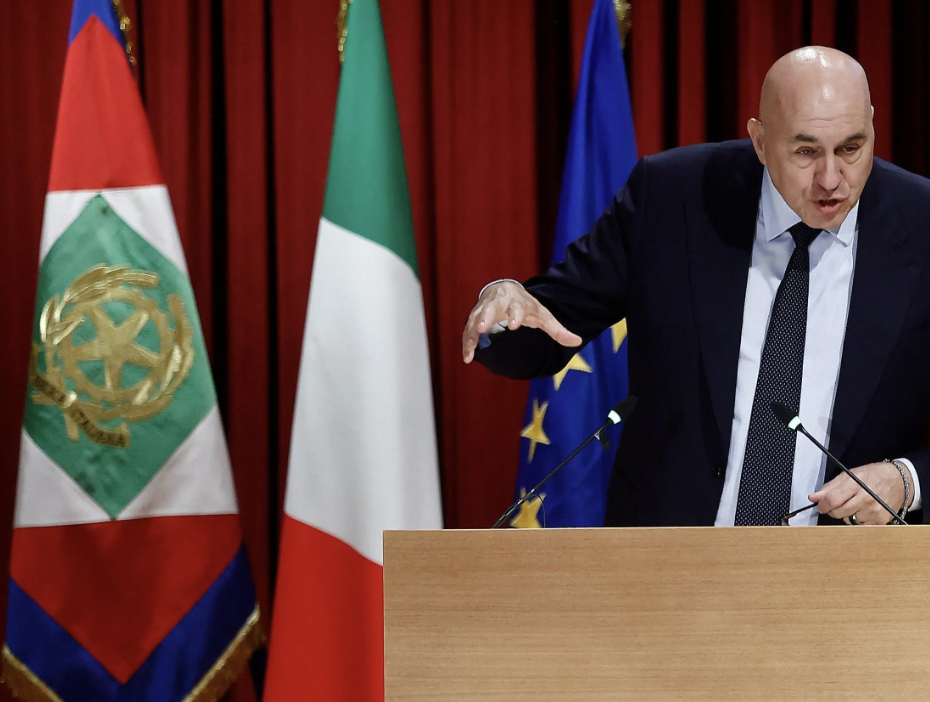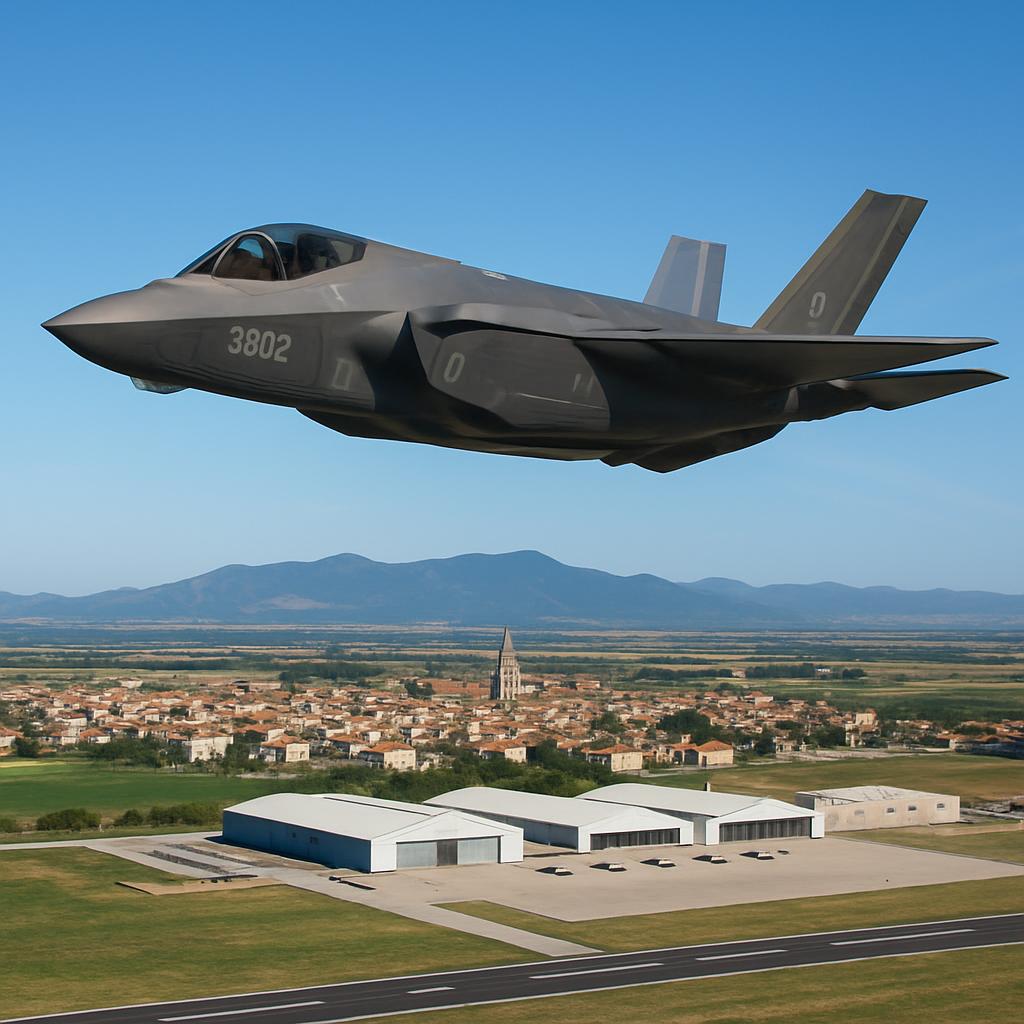By Robbin Laird
Italy is poised to make aviation history by establishing the first F-35 fighter pilot training center outside the United States, Defence Minister Guido Crosetto announced during a ceremony in Sardinia July 2. The groundbreaking facility will be located in Sicily, further cementing Italy’s position as a key partner in the international F-35 program.
Speaking at the Decimomannu air base alongside President Sergio Mattarella, Crosetto emphasized that this development represents more than just military cooperation. “The future is built not by limiting ourselves to defence, but by making defence a social, economic, and technological innovation engine,” the minister stated during the ceremony honoring 16 pilots who completed their initial training phase.
While the exact location remains officially unconfirmed, military sources indicate that two primary sites are under consideration: the Sigonella air base and the Trapani facility. Sigonella appears to be the frontrunner, given its existing infrastructure and strategic importance. The base currently houses the 41st Anti-Submarine Wing of the Italian Air Force and serves as home to the U.S. Navy’s Naval Air Station, making it a natural choice for expanded international cooperation.
Trapani represents an alternative option, hosting the historic 37th Air Force Wing and boasting decades of experience with fighter aircraft operations, from the F-104 to the modern Eurofighter Typhoon. The conversion process for either facility is estimated to take approximately six months.

This announcement builds on Italy’s already substantial role in the F-35 program. The country operates one of only two final assembly facilities outside the United States, located in Cameri, Piedmont, and managed by aerospace leader Leonardo. This facility produces F-35A conventional takeoff aircraft for the Italian Air Force and F-35B short takeoff/vertical landing variants for the Navy, including aircraft destined for the Netherlands.
Italy’s commitment to the F-35 program runs deep, with plans to acquire 115 aircraft at a total cost of €7 billion. Recent procurement documents outline the acquisition of an additional 25 aircraft, along with engines, equipment, and logistical support extending through 2035.
The country already operates the International Flight Training School (IFTS) at Decimomannu, where pilots from Austria, Canada, Saudi Arabia, Qatar, Germany, Singapore, Japan, Hungary, the United Kingdom, Spain, Sweden, and the Netherlands receive training. The facility has earned international recognition for its excellence, with the U.S. Air Force planning to send ten of its own pilots for specialized training.
“This represents a choice of great strategic importance,” noted Deputy Nino Minardo, chairman of the Defence Committee at the Chamber of Deputies. “It’s not only recognition of our country’s operational capabilities, but also a concrete opportunity to strengthen Italy’s role in the Euro-Atlantic defense alliance.”
The economic implications extend beyond job creation. The presence of an advanced military training facility is expected to stimulate innovation in the defence technology sector and establish Sicily as a new industrial hub in the Mediterranean region.
The F-35 training program will incorporate cutting-edge technology, including artificial intelligence integration. General Antonio Conserva, Chief of Staff of the Air Force, explained that modern pilot training focuses on human-machine integration, with AI serving as an aid rather than a replacement for human decision-making in complex combat environments.
The training will be particularly sophisticated given the F-35’s dual-capability nature for these aircraft can carry both conventional weapons and nuclear warheads, including the new B61-12 tactical nuclear bombs. While it remains unclear whether nuclear weapons training will be part of the Sicily program, the capability adds another layer of strategic significance to the facility.
The Sicily training center represents a broader trend toward increased international cooperation in military aviation. The success of the existing IFTS program demonstrates the value of shared training resources and standardized procedures among allied nations.
However, the path to this achievement hasn’t been without challenges. A similar European joint training center was proposed in the early 2000s but failed to materialize due to political disagreements among European partners. Italy’s decision to proceed independently, with substantial support from Leonardo, ultimately created the successful model now being replicated in Sicily.
The Sicily F-35 training center is expected to begin operations within the next year, pending final site selection and facility conversion. The program will likely start with a limited number of international participants before expanding to full capacity.
This development positions Italy as an increasingly important player in global defence aviation training, complementing its existing roles in F-35 manufacturing and maintenance. For Sicily, it represents a transformative opportunity to become a hub for high-tech military training while contributing to regional economic development.
As Minister Crosetto emphasized during the Sardinia ceremony, “We need strong defence primarily to ensure peace and security, because there is no democracy without peace and security.” The Sicily training center embodies this philosophy, turning defence capabilities into engines for technological innovation and international cooperation.
Featured image was generated by an AI program.
Sources from which the quotes were taken:
Piloti degli F-35 addestrati in Sicilia. Crosetto: “Primo posto fuori dagli USA”
Dal Piemonte alla Sicilia, ecco dove l’F35 Usa parla (o parlerà) italiano
L’analisi/ La scuola per gli F35, il riconoscimento atteso
Crosetto: «I piloti degli F35 saranno addestrati anche in Sicilia»
Crosetto: “In Sicilia addestrati i piloti degli F35, il primo posto fuori dagli Usa”
“In Sicilia addestrati piloti F35, primo posto fuori Usa”
This last citationn is where the photo of the Defence Minister was taken and his quotation about the F-35.
Italy and the F-35: Shaping 21st Century Coalition-Enabled Airpower


